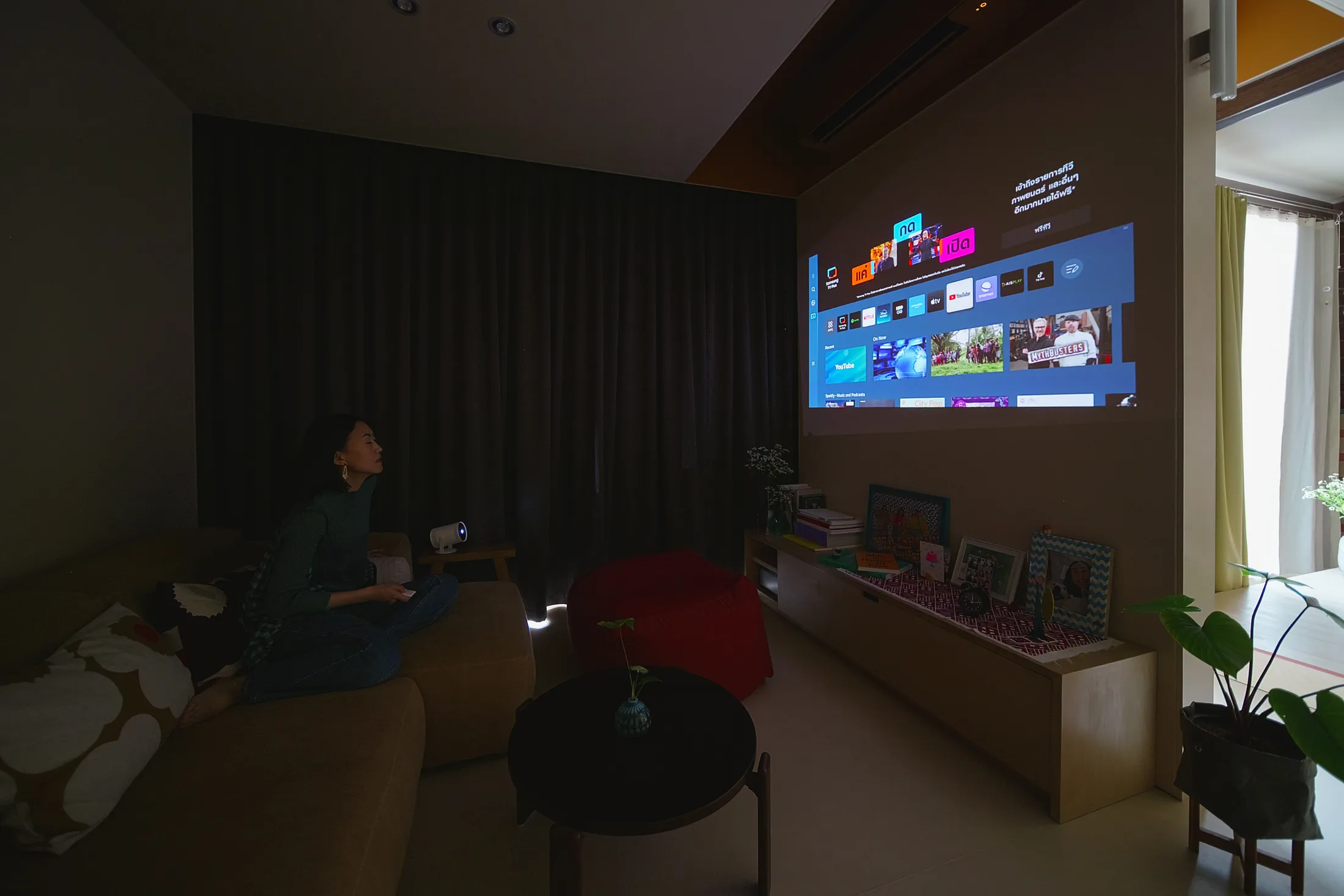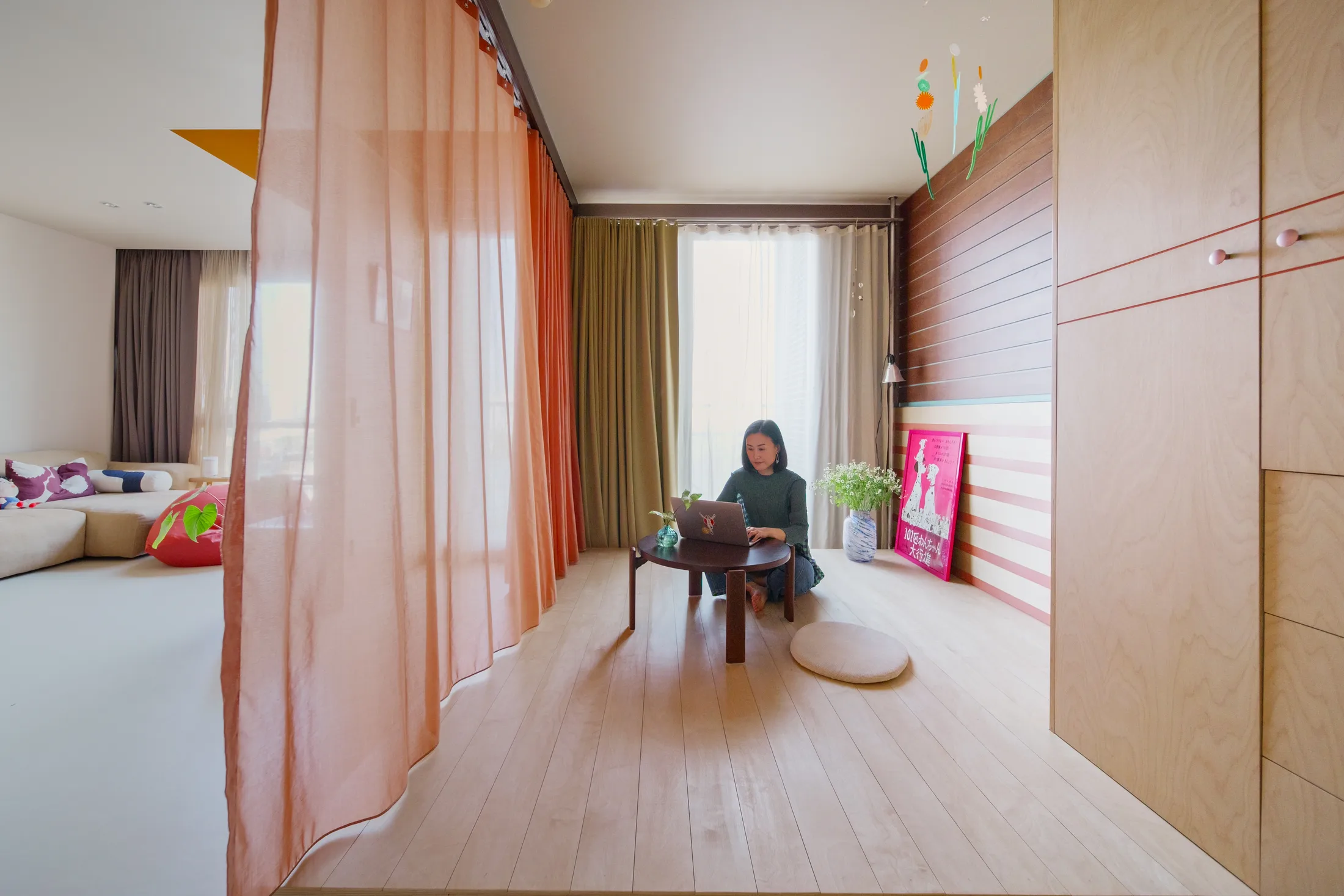Open Menu
Search

What began as a standard one-bedroom apartment became a space for rest, ritual, and quiet clarity. Reimagined through thoughtful collaboration between close friends, it now embraces simplicity – and play – in a way that feels expansive.






“The key idea is to create a sense of spaciousness within this small unit.”







“I enjoy exploring cities and urban spaces, observing how architecture and design influence the way people live and interact. It’s fascinating to see how small details in design can shape entire environments.”












“Unlike living big, living small requires more creativity, discipline, and mindfulness,” says Promchan Chanratanapreeda of her 54sqm/581sqft home. A wonderfully bold and wonderfully soft apartment in northern central Bangkok, it stands as a shining example of this mindset. Visually, it has the clarity of Scandinavian minimalism with a hint of vibrant maximalism. Most importantly, it is a home shaped by intention.
The apartment’s transformation was a true collaboration born from a long-standing friendship between Chanratanapreeda and architect Ruchanan Patarapanich. The duo first met at university before coming together years later to rethink the space in a pairing that was as practical as it was personal. Chanratanapreeda wanted a home that prioritised multifunctionality, and Patarapanich delivered just that, using visually striking choices that always supported their shared core vision: a space that feels both expansive and adaptable.
Simply put, this home values space over stuff. Patarapanich explained how he began as he often does with projects of this scale: “When designing a small space, I tend to open it up, remove the walls, and try to include flexible partitions.” This immediately transformed the typical one-bedroom layout, with limited light and storage, into a clean foundation for restrained, considered design. Patarapanich then introduced two sheer curtains – one cream, the other a darker red – as soft partitions. Mounted on ceiling tracks, they intersect at the centre of the apartment – one running the length, the other crossing it – to create zones that can be opened or closed as needed. More than just a flexible divider, the curtains offer privacy for sleeping, dressing, and lounging, while simultaneously shaping the experience of how you move through the space.
At first glance, the home appears to have no bedroom. And in some ways, it really doesn’t. Instead of your traditional bedroom or even a fixed sleeping space, Chanratanapreeda and Patarapanich opted to create a versatile unit that could be used for a variety of functions. The resulting raised wooden platform Patarapanich designed anchors a back corner of the home, offering a space where Chanratanapreeda can do light exercise, ironing, laptop work, and even flower arranging by day. Then, at night, she simply lays out a foldable tatami mattress to sleep on before folding it away again in the morning. On the thinking behind the choice, she reflects: “We designed this space not to have a bulky bed, and not even to look like a bedroom. It can just be a place for the act of sleeping.”
This home is shaped by conversation – between space and belongings, between old friends, and between design and lived experience. Patarapanich and Chanratanapreeda’s long-standing friendship laid the foundation for a design that feels both personal and precise. Together, they’ve created a home that balances tradition and modernity – where familiar rituals meet quiet innovation. The result is a space that shows how thoughtful design can reshape the way we live.